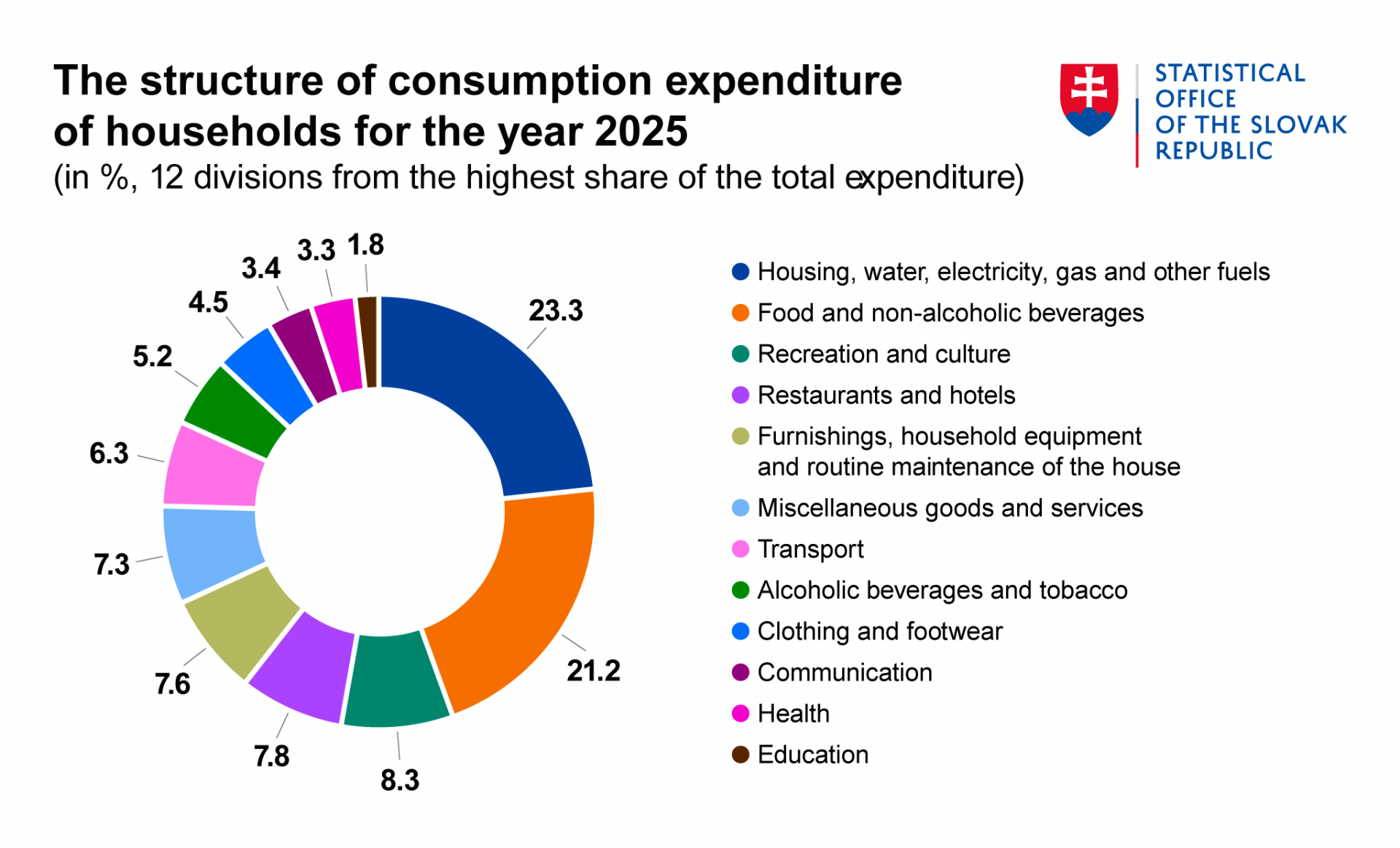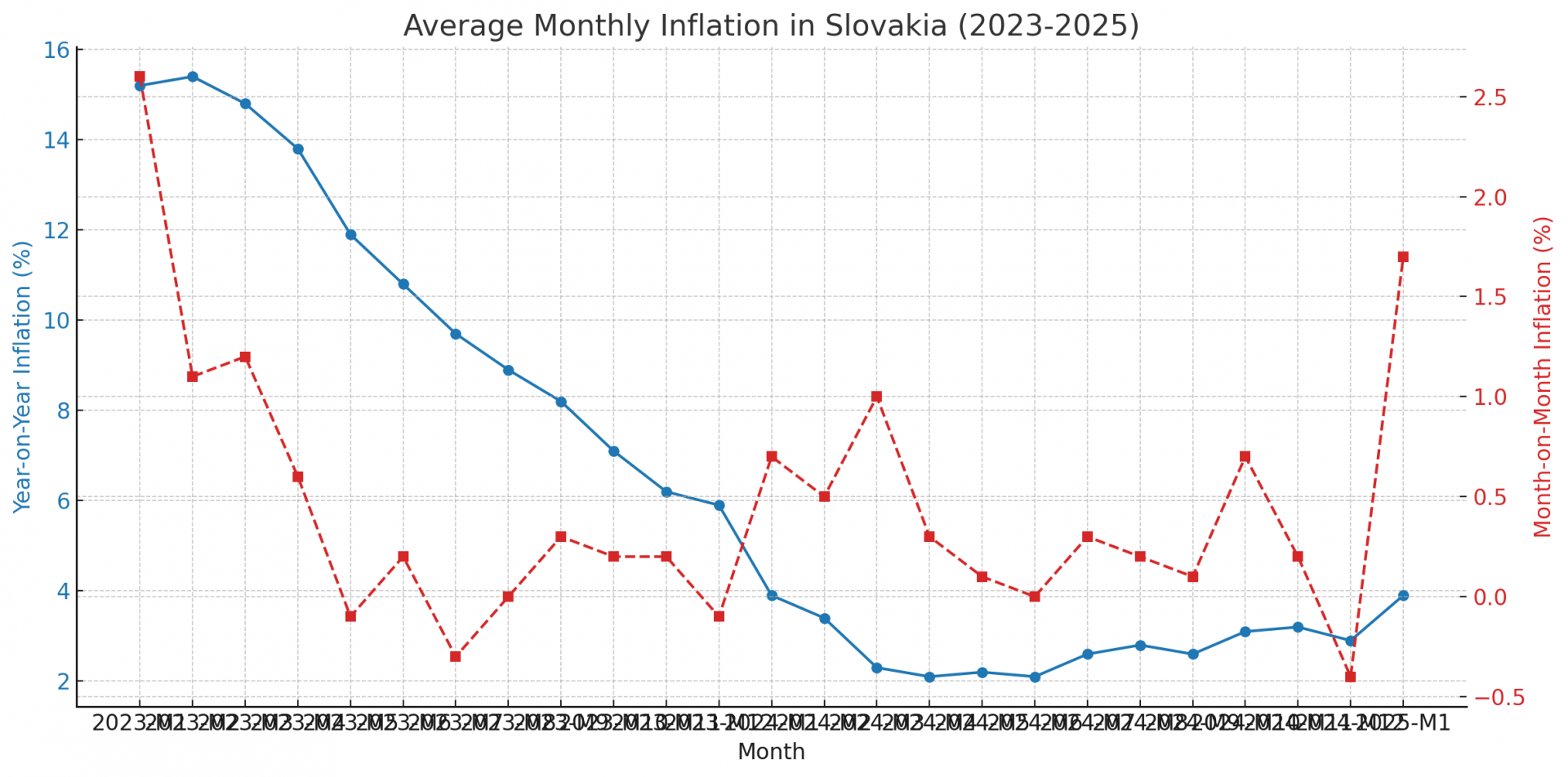Slovakia’s inflation rises to 3.9% in January, driven by tax changes and energy costs
Slovakia’s inflation rate rose to 3.9% in January 2025, marking a return to levels seen a year ago, according to the Statistical Office of the Slovak Republic. The increase was largely driven by changes in VAT rates, a new tax on sweetened beverages, and rising energy costs.
Consumer prices rose 1.7% month-on-month, the highest monthly growth in the past two years. This surge was felt across 10 of 12 expenditure categories, with the sharpest increases in alcoholic beverages and tobacco (+4.6%), transport (+3.5%), and food services (+2.5%). The only sectors to record price declines were apparel, footwear, and healthcare.
Key Drivers of Inflation
Housing and energy, the largest component of household spending, saw a 1.3% price increase, despite a cap on energy prices. The VAT increase to 23% contributed to rising costs in gas, heat, and electricity. Meanwhile, food prices rose 0.5% overall, with notable increases in fruit (+5.6%), vegetables (+2.3%), and sugar products (+2%). However, prices for bread, meat, dairy, and oils declined slightly.
The new excise tax on sugar significantly impacted non-alcoholic beverages, which saw a 12% increase in prices. Mineral water and fruit juices became 17% more expensive, while coffee, tea, and cocoa rose by 4%. Alcohol prices also surged, with wine up 13.3%, spirits 7.1%, and beer 5%.
Transportation costs climbed 3.5%, driven by higher fuel prices, while postal services rose 14.5% and telecommunications costs increased 3.4%. Education fees also saw notable growth.
Year-on-Year Inflation Trends
Compared to January 2024, inflation reached its highest level in 12 months, with prices rising across all 12 expenditure categories. The most significant increases were seen in education (+11%), alcohol and tobacco (+7%), and non-alcoholic beverages (+12%), where the sugar tax played a major role.
Food prices increased 1.7% year-on-year, with six out of nine major food categories seeing growth. Meat, bread, and vegetables were among the few items to register a price drop. Housing and energy costs rose by 2.5%, with water and waste services maintaining double-digit growth rates.
Core and Net Inflation
Core inflation, which excludes regulated prices and tax adjustments, stood at 2.7% year-on-year, while net inflation, which further excludes food price changes, reached 2.5%.
Impact on Households
In 2025, the Statistical Office will publish inflation figures for specific social groups, including pensioners, low-income households, and employees. These figures will be available on February 26, 2025.
A new consumer basket for 2025 was also introduced, with housing and energy costs declining to 23.3% of household expenses, while food and non-alcoholic beverages dropped to 21.2%. In contrast, recreation and culture saw an increase, now accounting for 8.3% of spending.
With tax adjustments and global economic factors continuing to influence prices, inflation trends in Slovakia will remain closely watched in the months ahead.
Source: Statistical Office of the Slovak Republic










